
Papanikolas Group
Ultrafast Spectroscopy and Ultrafast Microscopy
Papanikolas Group (2013)
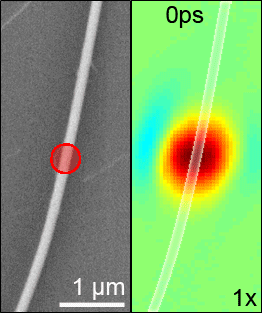 Watching Electrons Move in Silicon Nanowires Using Femtosecond Pump-Probe Microscopy.
Watching Electrons Move in Silicon Nanowires Using Femtosecond Pump-Probe Microscopy.
The movement of electrons through objects is central to the function of all electronic devices. We have developed an ultrafast microscope that is capable of generating photoexcited charge carriers in a localized region of a single nanostructure, and then observe them as they move away from their initial location. In the image at the left, photoexcited electrons are created within the red circle. As time increases, the circular spot elongates vertically reflecting the motion of the charge cloud. The blue spot at later times results from trapped charges.
(Nano Letters, 2013, 13 1336)
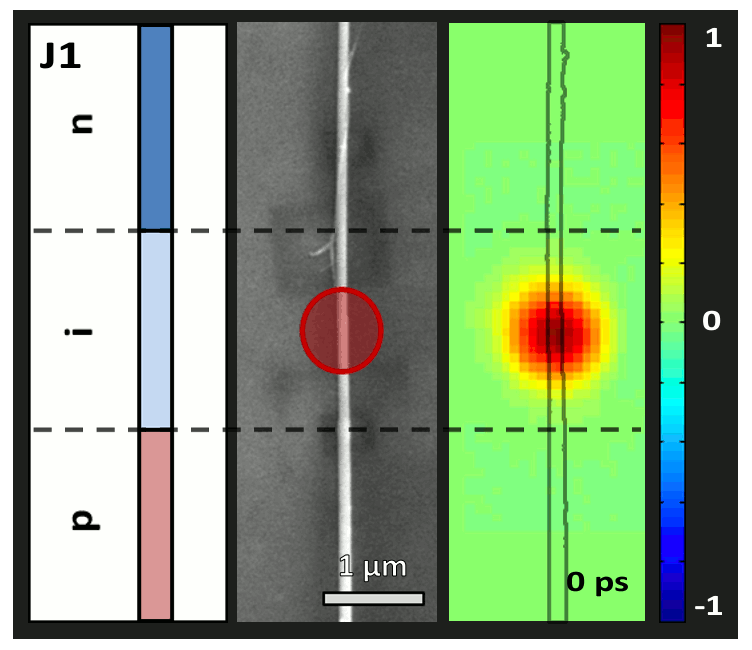 Imaging Charge Separation in a p-n Nanowire Junction.
Imaging Charge Separation in a p-n Nanowire Junction.
The electric field created at the junction between p-type and n-type Silicon is central to the separation of electrons and holes in photovoltaic devices. We have used a spatially-separated pump-probe microscopy technique to image charge separation in a Si nanowire encoded with an axial p-type/intrinsic/n-type (p-i-n) junction. The ultrafast microscopy experiments were combined with finite element simulations, which provide a detailed understanding of the carrier drift/diffusion and recombination in the junction.
(Nano Letters, 2014, 14 3079)
 Long-lived Charge Separation in a Light-Harvesting Polymer
Long-lived Charge Separation in a Light-Harvesting Polymer
A light-harvesting assembly (PT-Ru) consisting of a P3HT scaffold and pendant Ru(II) polypyridyl complexes was studied using femtosecond transient absorption spectroscopy. Photoexcitation of the polymer backbone results in a positive polaron and a reduced complex that persists for 20−60 μs. The long-lived nature of the charge-separated state is attributed to the high mobility of holes on the polymer backbone, which facilitates spatial separation of the electron and hole, delaying recombination.
(J. Phys. Chem. Lett., 2013, 4 2269)
 Ultrafast Photoactivation of a Water Oxidation Catalysts for Solar Fuels
Ultrafast Photoactivation of a Water Oxidation Catalysts for Solar Fuels
Light-driven water splitting for solar fuels production requires the integration of light-harvesting chromophores with catalysts for water oxidation and fuel production. Water oxidation demands sequential absorption of four photons, each resulting in the progressive oxidation of the catalyst. We have used ultrafast spectroscopy to characterize the first photoactivation event in a chormophore-catalyst assembly anchored to TiO2.
(J. Phys. Chem. C, 2013, 117 24250)
 Electron-Hole Recombination Dynamics Influenced by Optical Resonator Modes
Electron-Hole Recombination Dynamics Influenced by Optical Resonator Modes
Femtosecond pump−probe microscopy reveals that the electron-hole recombination time in needle-shaped ZnO rods depend upon location within the structure. Recombination at the tip of the rod occurs through an excitonic or electron−hole plasma state, taking place on a picosecond time scale. Photoexcitation in the larger diameter sections of the interior exhibit dramatically slower recombination that occurs primarily through defects sites. This spatial variation arises from differences in cavity resonator modes at the two points, revealing a new means by which shape can affect charge carrier behavior.
(J. Phys. Chem. B, 2013, 117 4390)

Front Row (left to right): Li Wang, Ernest Vallorz, Stephanie Bettis, Melissa Gish, Emma Cating, Michelle Gabriel, Will Fondrie. Back Row (left to right): Alexander Gilligan, David Zigler, Justin Kirschbrown, Zach Morseth, Erik Grumstrup, Robert Brown, Aaron Brown, John Papanikolas
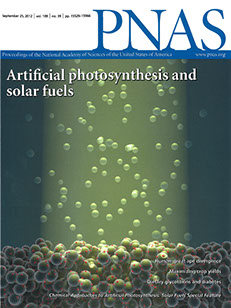
 Ultrafast Dynamics of Solar Energy Conversion
Ultrafast Dynamics of Solar Energy Conversion
Ultrafast Spectroscopy • Ultrafast Microscopy
Computer Simulation and Modeling •
Nanoscale Materials • Nanodevices • Photonics • Molecular Assemblies • Electron Transfer • Energy Transfer
Ultrafast spectroscopy enables one to follow the dynamics of chemical systems in “real time.” Our group is using ultrafast techniques, and developing new ones, to characterize the fundamental photophysical events that underpin solar energy conversion. We are using time-resolved absorption and emission methods to characterize energy and electron transfer in molecular materials used in solar fuels applications. We are also pursuing new ultrafast microscopy methods that can excite a single structure in one location and probe it in another. These methods enable the direct visualization of charge flow in individual semiconductor nanostructures used in solar photovoltaic, photonic, and nanoelectronic applications. Experimental observations are combined with computer simulations (finite element methods and molecular modeling) to develop a detailed picture of how the structure and shape of an object influence its photoinduced dynamics.
Collaborations
Our research has benefited from collaborations with a number of groups that are experts in the synthesis of molecular assemblies and nanomaterials. Collaborators include Thomas Meyer (UNC-CH), James Cahoon (UNC-CH), Marcey Waters (UNC-CH), Kirk Schanze (University of Florida), and John Reynolds (GA Tech).
Research Funding
Support for our research has come from the National Science Foundation, the UNC Energy Frontier Research Center, the Department of Energy, the National Aeronautics and Space Administration, the Army Research Office, the ACS Petroleum Research Fund, and the Research Corporation
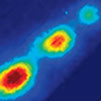 Ultrafast Microscopy: Visualizing Charge Carrier Motion
Ultrafast Microscopy: Visualizing Charge Carrier Motion
Controlling the flow of charges through nanostructures is central to their function in photovoltaics, LED devices, and nanoelectronics. We are developing femtosecond pump-probe microscopy techniques that directly image the motion and lifetimes of charges in semiconductor nanowires and nanowire networks.
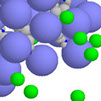 Molecular Materials for Solar Energy Conversion
Molecular Materials for Solar Energy Conversion
Light-harvesting and charge separation are central solar energy conversion. We are using ultrafast spectroscopy to characterize these fundamental processes in molecular materials. Our research informs the development of molecular assemblies for solar fuels applications.
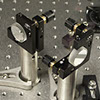 Development of New Ultrafast Methods
Development of New Ultrafast Methods
The design and construction of spectroscopic instrumentation is an integral part of our research. In addition to femtosecond transient absorption and time-resolved emission spectroscopies, which are used on routine basis, current projects are developing ultrafast microscopy and femtosecond Raman spectroscopies.
Papanikolas Group
Department of Chemistry
University of North Carolina at Chapel Hill


